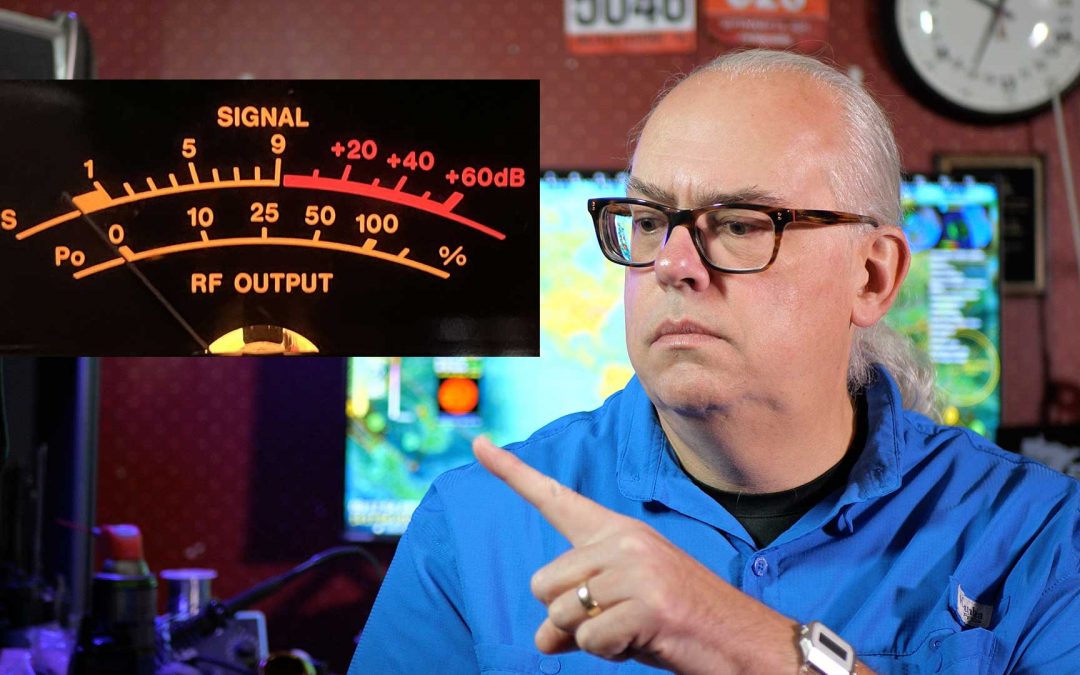Signal reports are a little better than worthless. That’s how back in 1934 Arthur Braaten W2BSR described the method used by amateur radio operators for reporting and describing the quality of signal over the air. Terminology was inconsistent and the values had little to no meaning.
Braaten set out to fix this and in October of 1934 QST published an article titled A New Standard System of Reporting Signals. If you didn’t get the point, the sub heading spelled it out: Use the R S T System!
Signal reports are the subject for this week’s video: Why your Ham Radio Signal Report may be WORTHLESS https://youtu.be/drjpbhgBCpQ
This video is a result of heading down the signal report rabbit hole. Wanting to learn more about how our modern reporting system worked, I ended up searching the QST magazine archives and surprisingly came upon the original article that outlined the process we use today. I was a bit surprised on how things haven’t changed much in the last 90 years.
Another thing that’s old as the hills are people harping about the accuracy of signal reports. I found clippings from hams bemoaning the giving of a 59 signal to a DX station in order to not offend, and more articles and op-eds to the contesting community to abandon their practice of “59 good luck in the contest”. I guess the more things change, the more they stay the same.
Sources for this week’s video:
“A New Standard System of Reporting Signals” ARRL QST Magazine October 1934: https://www.arrl.org/qst (requires ARRL membership)
Ham Radio Magazine January 1982 page 41: https://www.worldradiohistory.com/Archive-DX/Ham%20Radio/80s/Ham-Radio-198201.pdf
What Good is an S-Meter (WA9TT) https://wa9tt.com/Research/articles/article_S_meter.pdf
The Challenger Antenna
The couple weeks I’ve been working with the KJ6ER Challenger antenna. This is a variation of his venerable PERformer antenna. But instead of being a 1/4 wave vertical, the Challenger is an Off Center Fed vertical dipole with a 4:1 transformer at the feedpoint.
The advantage of the Challenger is that with a longer radiating element, it positions the bulk of the RF radiating energy at the centerpoint of the element, maximizing output and lowering the RF radiation angle. Greg Mihran, KJ6ER, calculates the Challenger to have about 94% efficiency, and the low angle gives this antenna great DX capabilities.

But what’s been challenging me is the antenna’s counterpoise. In traditional fashion, the OCF dipole is a half wave radiator with 2/3 of the element on one side and 1/3 on the other. At the offset center is the feedpoint, which is a 4:1 transformer. The Challenger shares this configuration, but the 1/3 portion of the radiator is to lay on the ground as its counterpoise.
That’s the part that is perplexing me. I build the counterpoise per Greg’s specifications and the extend the whip according to his measurements, but the SWR is always off. I find that I need to extend the counterpoise length to get a good match.
Now I must admit I haven’t consulted Greg yet on this, I wanted to experiment a bit more before I reach a conclusion. But I believe that in order for this antenna to function, you need to get the feed point lower to the ground. The first time I deployed the antenna, I had the tripod set at about five feet and much of the counterpoise was in the air. The second time, I lowered the tripod to about 30 inches and the match was closer, but the counterpoise was longer than expected. I’m starting to believe that in order to really get a good match, the feedpoint can’t be more than 24 inches off the ground. I’ll test that theory this weekend.

But despite that, the antenna rocks! The last weekend I had it out I had booming signal reports on 20 meters with a great distances. I think this antenna is a winner. Is it better than the PERformer? Not necessarily. The PERformer has its place because it balances long and short skip for better coverage. But if I wanted to concentrate on the coasts or DX, I’d grab the challenger.
A video is coming soon, so stay tuned.
Finishing Up
We are finally hitting the road this weekend! After taking the month of August off from camping, I am really looking forward to this extended weekend adventure to Wildcat Mountain State Park US-1480. Wildcat Mountain is in the heart of Wisconsin’s Driftless Area, and is offers some of the most amazing views of the Kickapoo valley and surrounding area. We’ve done a couple videos from that place, it’s become a new favorite for me, though. Look for me to be on the air much of the weekend from that park.
This week I’m also meeting up with Dave, KZ9V, to produce some content. As I’ve said before, Dave’s my muse, he comes up with great ideas and its up to me to figure out how to translate the idea into great video. I’m not gonna give it away, but I think you’ll find what we’re working on to be enjoyable.
I hope to get you in the log soon
Michael
KB9VBR

Recent Comments